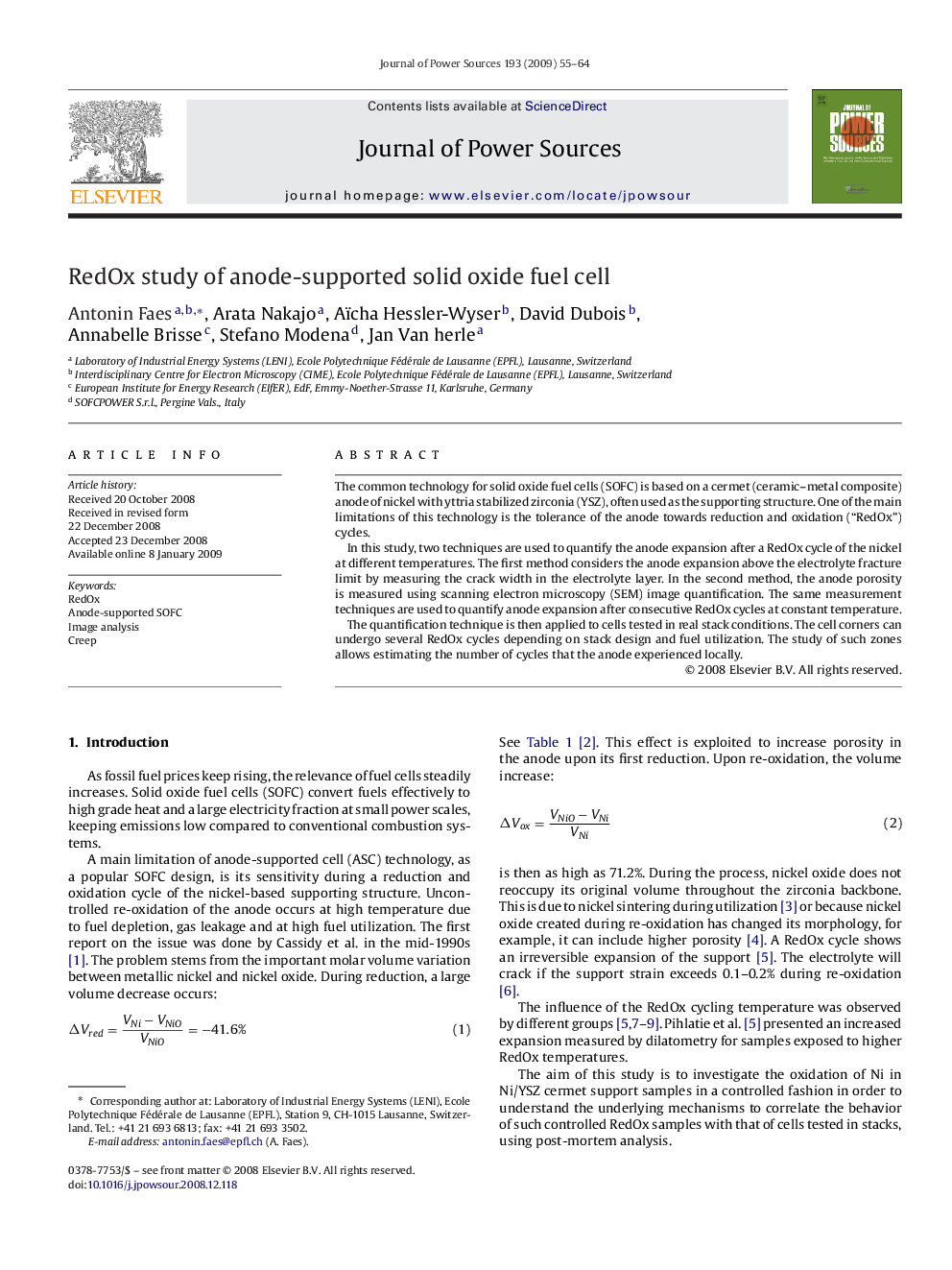| Article ID | Journal | Published Year | Pages | File Type |
|---|---|---|---|---|
| 1289450 | Journal of Power Sources | 2009 | 10 Pages |
The common technology for solid oxide fuel cells (SOFC) is based on a cermet (ceramic–metal composite) anode of nickel with yttria stabilized zirconia (YSZ), often used as the supporting structure. One of the main limitations of this technology is the tolerance of the anode towards reduction and oxidation (“RedOx”) cycles.In this study, two techniques are used to quantify the anode expansion after a RedOx cycle of the nickel at different temperatures. The first method considers the anode expansion above the electrolyte fracture limit by measuring the crack width in the electrolyte layer. In the second method, the anode porosity is measured using scanning electron microscopy (SEM) image quantification. The same measurement techniques are used to quantify anode expansion after consecutive RedOx cycles at constant temperature.The quantification technique is then applied to cells tested in real stack conditions. The cell corners can undergo several RedOx cycles depending on stack design and fuel utilization. The study of such zones allows estimating the number of cycles that the anode experienced locally.
